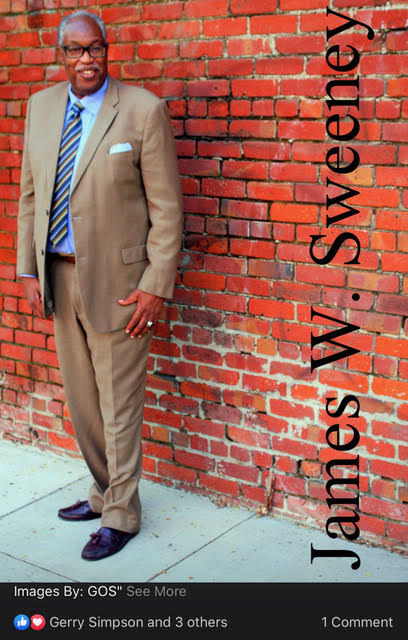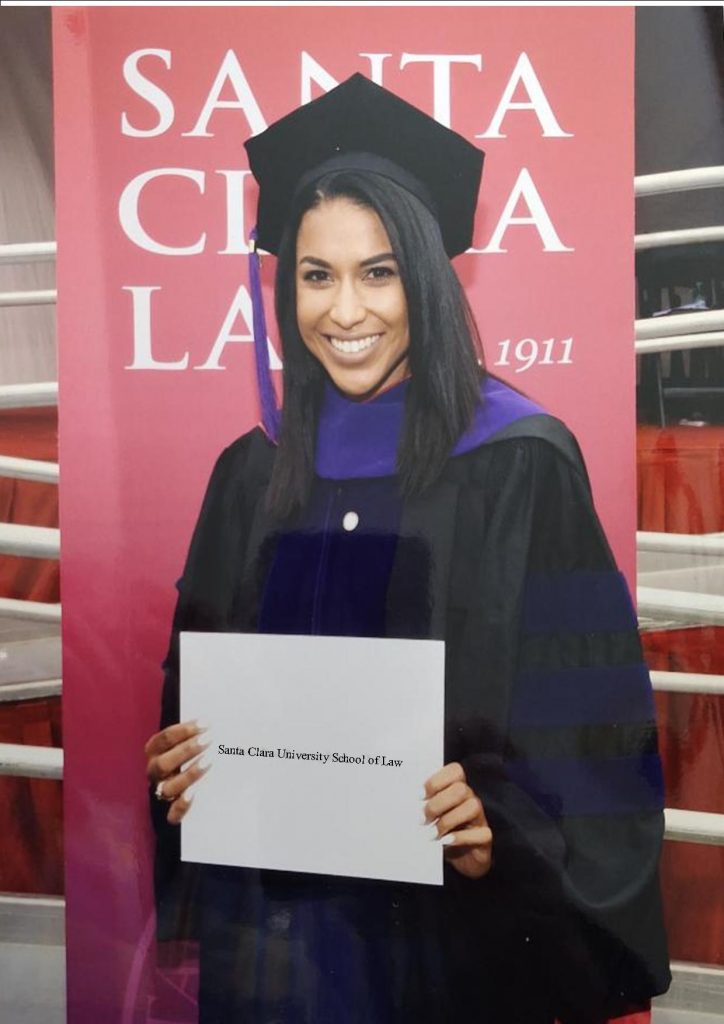By Arthur Davis
This
is a story that I am very proud to tell about my granddaughter, Tayler Davis,
born to our son LaMond Ray Davis and daughter-in-law Patrice Townsend, and of
course her proud grandparents Arthur L. and Fredda Davis.
My
wife and I grew up in San Bernardino and attended the local schools, as well as
our oldest son LaMond Ray, who lives in San Jose with his wife and family where
he currently works as a Sergeant with the Santa Clara Sheriff’s Department.
Tayler
Davis was born on September 27, 1991.
She had early influences in her life that made her the compassionate
young woman that she is today. When one hears the saying, “It takes a village
to raise a child”, it was clearly the case with Tayler.
She spent her early childhood with her maternal great grandparents, both paternal and maternal grandparents, she was also surrounded by many aunts and uncles who helped shaped her morals and values. She started her schooling at Apostles Lutheran School in San Jose where she attended from Kindergarten to eighth grade. It was very structured and taught her discipline and respect along with developing faith and trust in God.
During elementary school years she developed her passion for tennis at the tender age of 7. She was blessed with an African American coach, Don Johnson. He picked up Tayler and her younger sister from school during the week to help develop their tennis skills.
From the very beginning when she first picked up a racquet, one could tell how gifted she was. She was very athletic, has excellent hand/eye coordination, was competitive, and was yearning to learn the sport and soak up all the strategies and techniques involved to become a top player.
Tayler was also very tall for her age due to the Davis’ gene. She quickly emerged as a top junior player in the United States Tennis Association (USTA) in a very competitive sport that requires much time and travel in order to become a top junior player in the U.S. She was able to obtain a sponsorship for her racquets, clothes, lessons, travel, and tournaments due to her high ranking and was able to secure an African American scholarship to help offset some of the costs involved. She ended up being top 10 in the nation by the end of her junior year. She was offered scholarships to various academies early on, but would have to be home-schooled and live in dorms at the academy. She chose not to pursue the academy road, but rather focus more on school as she wanted to go to college and secure a college scholarship to play tennis.
Tayler decided to attend a private Catholic school Archbishop Mitty High School in San Jose. The school is well known for top academics with elite athletic teams; admission is very difficult to get into. Tayler entered her freshman year and wanted to play on the tennis team.
The tennis team was very competitive and was in a very tough conference which was the WCAL (West Catholic Athletic League). Tayler played on the varsity tennis team in the #1 singles position. It is very rare for any freshman to play in that spot due to mostly senior veteran players who has experience and can win at the important position. Tayler ended up playing all 4 years for Archbishop Mitty and compiled a 101-3 record.
She was selected team MVP for 4 years, Mercury News Athlete of the Year 4 years, team captain 4 years, WCAL MVP for 4 years and ultimately selected for the highest honor at the school which was induction into the Hall of Fame for Mitty High School in 2015. There were notable other athletes such as Drew Gordon, UCLA basketball player, Aron Gordon, 1st round draft pick, Orlando Magic basketball, Keilani Ricketts, softball player at Oklahoma and USA Olympic team. Tayler was also selected to Hall of Fame for leading the tennis team championship in 2017 for winning league and state with a record of 31-1.
During her high school studies and tennis, Tayler missed 32 days of school per year as she traveled to various US cities in order to compete at a much higher level and continue her high ranking. At this time she developed her discipline, organization and sacrifices to be the best student and athlete in order to continue on with her dreams. She missed various, dances, proms, parties and other social functions that interfered with what she was aspiring to do in her life. She did always find a balance to incorporate fun in her life to attend football games, hanging out with friends, school sporting events and dates. She was featured in various newspapers, cover of ESPN sports, cover of Mercury News many times, community newspaper and of course the USTA media outlet.
Tayler ended up with a 3.8 GPA and was offered many scholarships to all the top schools in the nation for tennis. She committed to CAL Berkeley with a full tennis scholarship her junior year basing her decision on staying close to home, CAL academics, top 5 NCAA tennis team and the diversity of the school. She had a very successful college career, playing at the number 3 or 4 spot in the singles line up and playing number 2 spot for doubles. Her highest ranking was #30 in the NCAA. She was voted co-captain her sophomore year thru her senior year. She was a strong leader and a role model for her teammates. She continued on with her discipline to focus and persevere with her mind set on graduating in Legal Studies in 2016. It is very difficult to play college tennis at such a high-level school that also excels in top academics due to the length of the tennis season which is August until May. The student athlete misses many lectures, classes and notes. Tayler stayed on track and graduated in 4.5 years which is the standard due to their tennis schedule.
After graduation, Tayler was undecided on what she wanted to pursue after college, so she traveled all over as a hitting partner for a young top player in the world 15-year-old Cici Bellis. Tayler spent 1.5 years practicing every day with her when they were not traveling, they were playing WTA (women’s tennis association) tournaments with all the pros in the world. She gained knowledge, experience and dedicated her time and effort to help this young girl reach her aspirations.
From her work she was able to save $70,000 and then decided to take the LSAT (Law School Admission Test) to attend law school. She continued to teach and share her knowledge of the game to younger students while studying and preparing to take the test. She passed the test and was offered another scholarship to Santa Clara University Law School.
In order to maintain the African American Scholarship, she needed to end the school year in the top 3% of the class each year. Once again, she dedicated her life to pursuing her dream to become a lawyer. She sacrificed much of her three years to study tirelessly to pass the bar in 2019.
She continued giving tennis lessons early in the morning or in between classes to keep up with her financial responsibilities and even traveled with young students in the summer to take them to out of state national tournaments just as she did when she was a junior player.
During her law studies, she became involved in the Innocence Project for 2 years and was instrumental in helping 2 different clients get exonerated. It was truly her passion to help others who were wrongfully accused of a crime and not having strong representation due to financial or poverty issues. Tayler continued as an intern for Santa Clara County in the public defender’s office learning and gaining experience for her next journey after law school.
Tayler graduated from Santa Clara in May 2019 with her JD degree (Juris Doctor). She was able to maintain her scholarship for 3 years and is proud to have paid the remaining balance with the money she saved, entering her career debt free, a truly amazing feat!
She took the bar after studying for 3 months in May 2019 and was getting the results in November. Needless to say, with her dedication and hard work, she passed it the first time. The California Bar is said to be one of the toughest to pass in the US.
She was already working as an intern for Santa Clara County however there was only 1 opening for the public defender position. There were 4 colleagues in the department that also passed the bar. They all needed to interview with a panel of 5 judges. Tayler received all 5 unanimous votes and was selected to begin her career in December 2019 as Santa Clara County Public Defender, Attorney Davis!
She was sworn in December 2019 by a judge who Tayler worked for during her internship who shared she had nothing but praise for her work ethic and was not surprised she was offered the opportunity, and this is only the beginning for her. When reflecting back on all her success and accomplishments in both academics and athletics, it is beyond amazing the characteristics she possesses and the hard work she puts in day after day without ever losing sight on what she sets her mind and heart to do!
We are most proud of the woman who wants to stand up and provide legal aid for those who are poor and needy, being able to provide representation for those who cannot afford an attorney to represent them.
She has become one of the most well educated, well trained and a very dedicated person to advocate for others that there is no limit on what she can attain.
She plans to move up within the Public Defender’s office and possibly pursue politics as her next move. We are beyond proud of the amazing young woman she become! My Granddaughter thank God every day for all the gifts she has been given.
 Westside Story Newspaper – Online The News of The Empire – Sharing the Quest for Excellence
Westside Story Newspaper – Online The News of The Empire – Sharing the Quest for Excellence

